#à la française
Text

1790-1810 Habit à la française by unknown maker
silk, velvet, satin
(Amsterdam Museum)
1K notes
·
View notes
Text

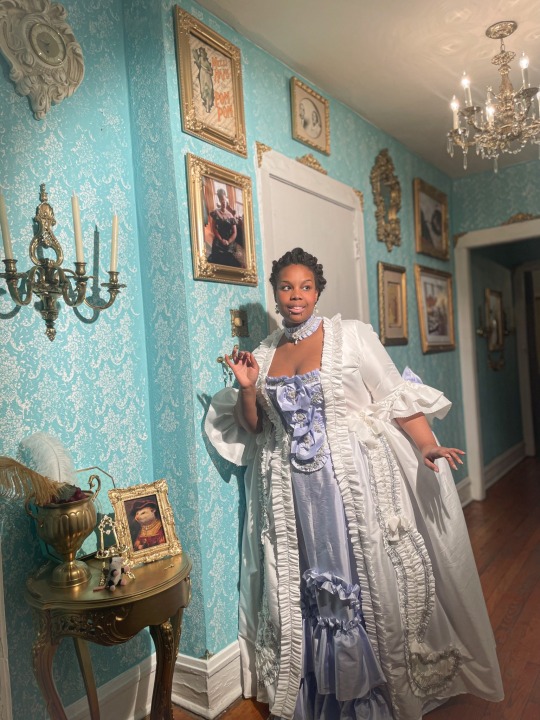
*a string quartet plays softly in the distance* | IG
#rococo#marie antoniette 2006#madame de pompadour#historical costume#historical clothing#robe à la française#baroque#watteau#fragonard#françois boucher#baby blue#pastel blue#mignonne#2022#pastel purple
2K notes
·
View notes
Text
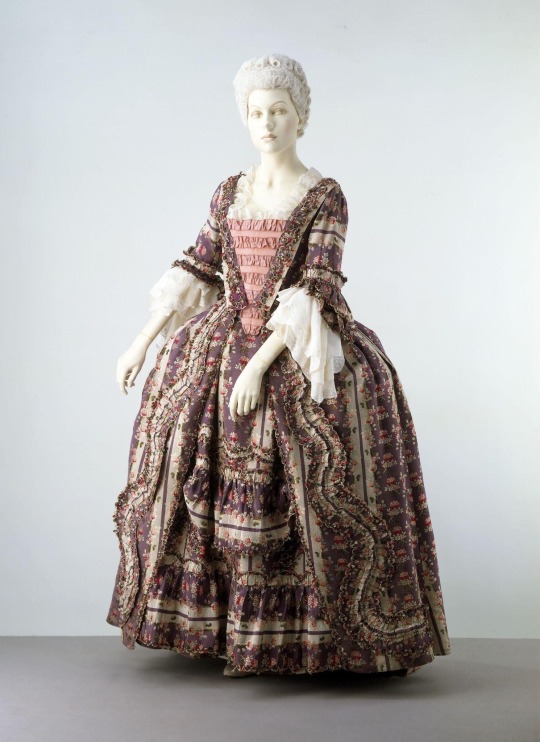
Purple Silk Robe à la Française, 1770-1775, English.
Victoria and Albert Museum.
#purple#womenswear#extant garments#dress#silk#1770#1770s#1770s dress#1770s extant garment#1770s England#1770s Britain#robe à la française#v&a#English#British
266 notes
·
View notes
Text
Les étoiles proposent un spectacle gratuit. Ça ne coûte rien de se servir de ses yeux.
George Orwell, Dans la dèche à Paris et à Londres (Down and Out in Paris and London)
VO :
The stars are a free show; it don’t cost anything to use your eyes.
#George Orwell#Dans la dèche à Paris et à Londres#livre#book#citation#citation française#littérature#littérature anglaise#autobiographie#Down and Out in Paris and London#quote#english quote
75 notes
·
View notes
Note
Do you have any advice on picking books for readers with limited time? I love to read, but in the past couple years I've been dissatisfied with almost everything I've read and I've purposely been trying to pick a variety: obscure, best-sellers, internet-recs, vintage, recents and I can't seem to pick well. I know the key to finding more good things is to read more quantity, but I've only got so much free time and can only read so fast.
Oh I feel you! There was a whole period of my life when I was desperately trying to find some alchemical formula to ensure that most of the books I read are good-to-great rather than okay-to-good. I had this scientific process where I tried to log a lot of details about the books I read and then look at the numbers year after year to find a common denominator. Is it a matter of reading more, or is it reading more older books vs. recent ones, male vs. female authors, books from my to-read list vs. impulsive reads, books recommended by friends vs. books I find myself? etc. etc. I made line graphs.
In the end the only factor that seemed to correlate with how many good books I read in a year was the number of unfinished reads, so the one piece of advice I have is to not hesitate to give up on a book you're not enjoying. I read multiple books at a time so it's easy to see if there's one that I keep neglecting in favour of the others; and I get most of my books for free or very cheap (from my local library, or OpenLibrary or Zlibrary, or secondhand bookshops where they're like 50cts apiece, or swapping books with friends), the ones I buy new are mostly books I've already read & enjoyed, so I don't have qualms about giving up 20 pages in if I'm not feeling it.
Other than that, I've kind of made my peace with the fact that finding a good book is a mysterious serendipitous process and most of the books I read will be just okay, plus a few bad ones and some great ones.
That said if most books you read end up being unsatisfying rather than at least okay, maybe you're not sure what you're looking for? It helps to identify what you want from a book at a particular time (fun escapism, learning more about a given topic, immersion in a specific atmosphere and if so, which one...) I tend to start a new read with a precise idea of what it would take for this book to be satisfying, e.g. "rn I feel like reading about someone's quiet daily life, maybe a diary or letters, set in a place or context I don't know much about, without turmoil or tragedy" or "a story set in the 17/1800s with flowery prose, interesting female characters, focused on intricate social shenanigans rather than romance or adventure" etc, so it allows me to narrow things down and eliminate potential reads where too many criteria are missing.
And I like to read a few 1-star goodreads reviews—some prefer to focus on 3-star reviews which are more balanced; personally I figure, if the people who hated this book the most cite reasons for disliking it that aren’t dealbreakers for me, that’s a good sign. And if the worst reviews cite stuff I'm actually looking for right now ("too long, too many digressions, long-winded prose, too quiet / not enough action", etc) then it’s a book that comes recommended both by 5-star and 1-star reviewers :)
#ask#(@ la française qui m'a envoyé un message ce weekend; je t'ai fait une réponse assez longue que tumblr a mangée 😭#c'est stressant pour tout le monde ce qu'il se passe en ce moment; n'hésite pas à m'envoyer un message privé si tu veux discuter <3)
274 notes
·
View notes
Photo
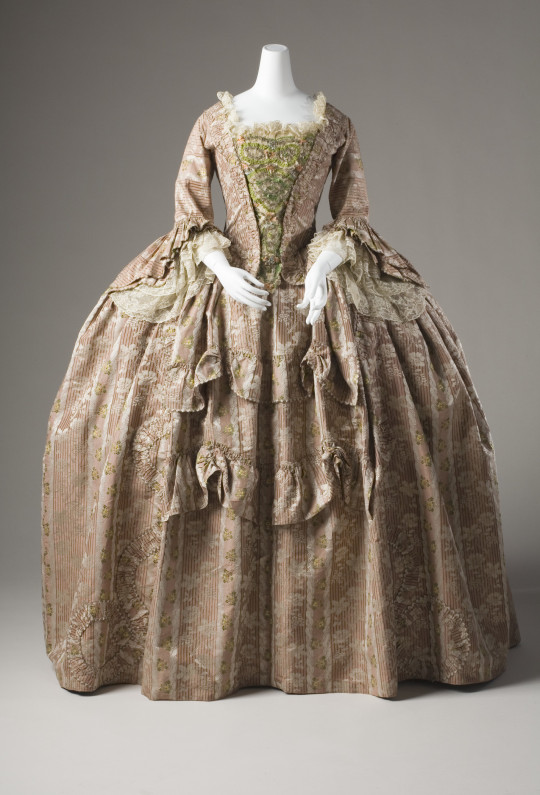

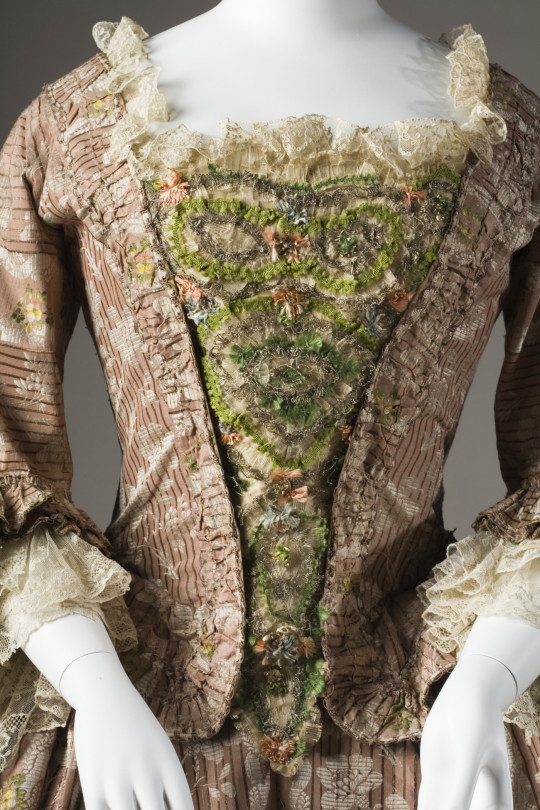
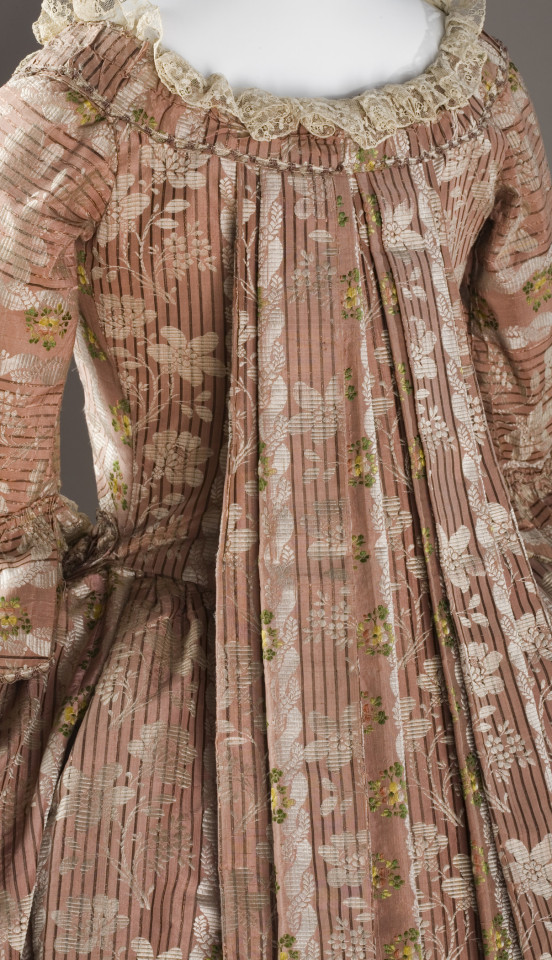


Woman’s Dress (Robe à la française). France (1760s-1770s).
Silk taffeta.
Images and text information courtesy LACMA.
394 notes
·
View notes
Text
Robe à la Française, Part II
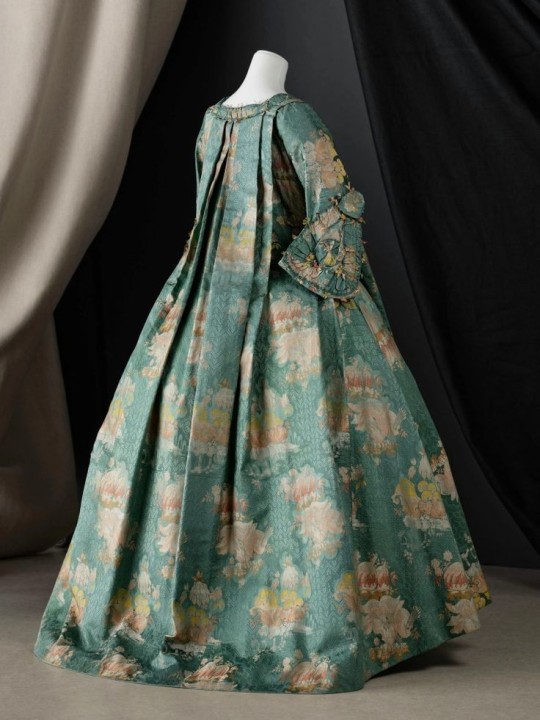
Fig. 1: Robe à la française • 1730-1740 • © Stanislas Wolff / Paris Musées, Palais Galliera
When I was researching the Rococo fashion era, I collected so many images and I have to share some of my favorites. It's not so much the style of the Robe à la Française that I like (though I do very much like the box pleats and drape of the back) but the fabrics, colors, and patterns. Fig. 1 shows a gorgeous print in a beautiful color combination. Such a print for a dress today wouldn't work very well, as contemporary dresses don't have the volume of the 18th century styles, nor the lovely draping in the back of the Robe à la Française.
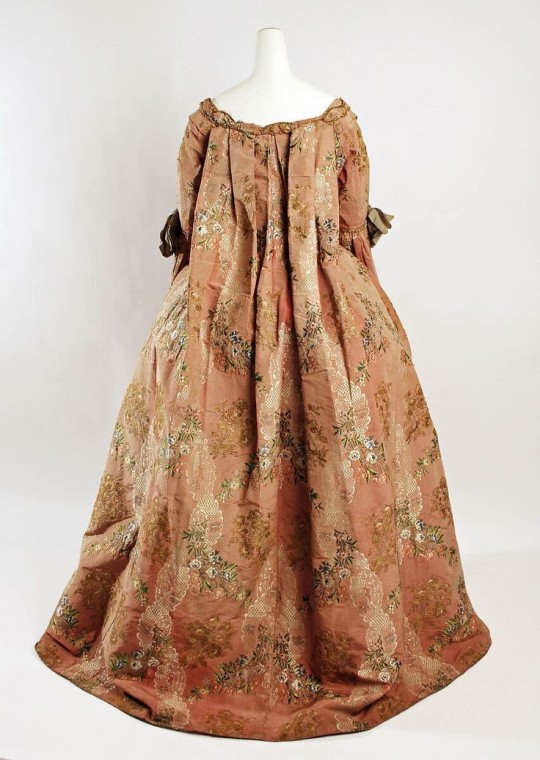
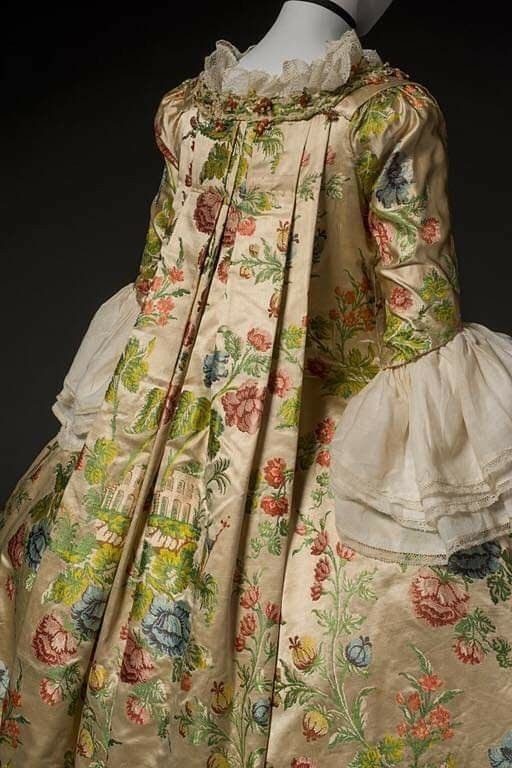
The Robe à la Française was derived from the loose negligee sacque dress of the earlier part of the century, which was pleated from the shoulders at the front at the back.
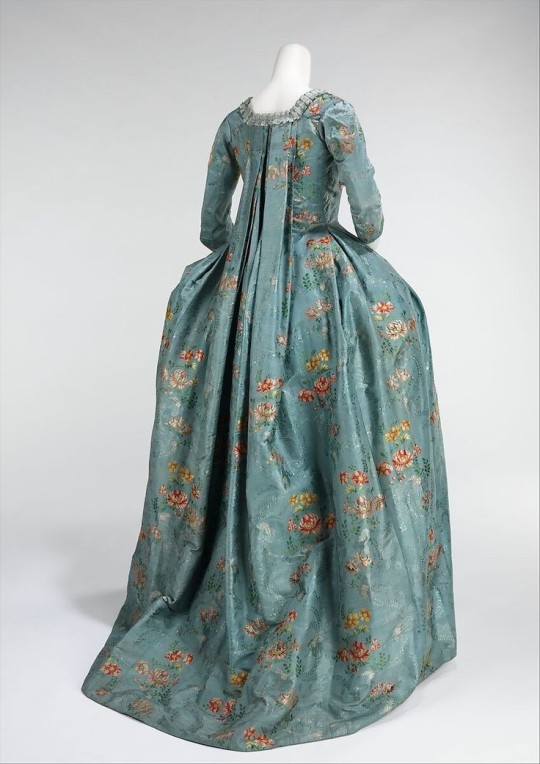

Metropolitan Museum of Art • 1760-70 • Silk, cotton
The silhouette was achieved with a funnel-shaped bust joining wide rectangular skirts. The wide skirts were supported by panniers and hoops constructed from cane, metal, and baleen. Fig. 2 shows a portrait sitter wearing a Robe à la Française with a contrasting underskirt.
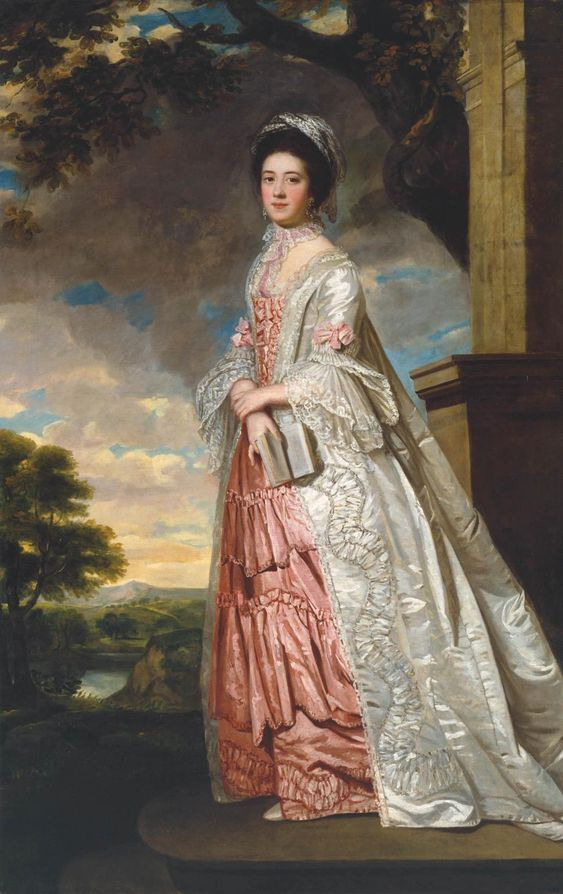
Fig. 2: Artist unknown (British). Mrs. Cadoux, ca. 1770

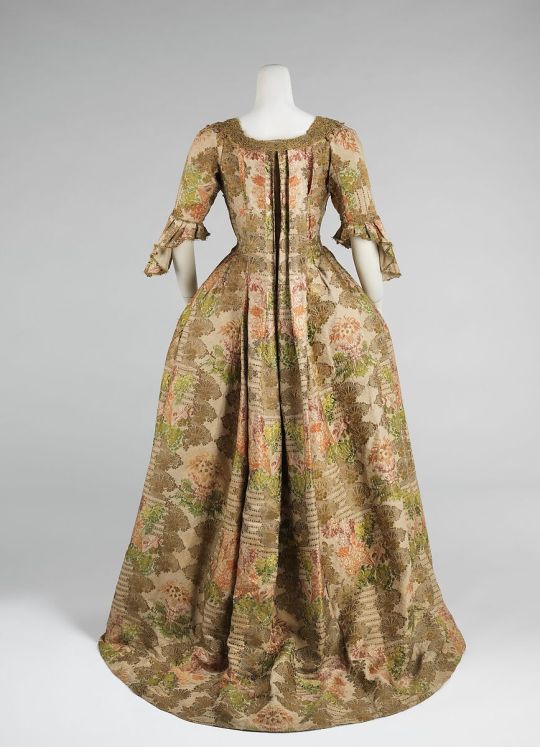
#art#portrait#fashion history#georgian fashion#rococo era fashion#robe à la française#1700s fashion#women's fashion history#18th century dresses#the resplendent outfit blog#sacque dress#metropolitan museum of art fashion Institute#textile patterns#fashion blogs on tumblr
30 notes
·
View notes
Text



A woman's sack and petticoat, 1770-75, English; white figured satin, brocaded with coloured silks, Spitalfields, 1750s; updated 1775-80
#18th century#18th century fashion#spitalfields silk#fashion history#historical fashion#1770s fashion#silk#1770s#robe à la française#rococo
112 notes
·
View notes
Text

@earlgrey24 you've inspired me
Hi my name is Chevalier François-Marie Arouet de Volatire Gentilhomme de Chambre du Roi. I like writing satire (that's why I got put in the Bastille) and I have a long grey wig à la Duc de Nevers and sparkly dark eyes that everyone talks about. A lot of people tell me my style looks like Louis 14 (AN: if u don't know that is get da hell out of here!). I'm not related to the Duc de Richelieu but I wish I was because he's a major fucking hottie. I live in Prussia but I'm French. I have pale white skin. I'm also a poet, and I write for the Comédie-Française which should really be called the Theâtre-Française where my plays are the most famous (I wrote my first one when I was nineteen). I'm basically nobility (in case you couldn't tell) and I wear a lot of lace and wig powder. All of my clothes are retro because it's cooler. For example today I was wearing a long pink and gold waistcoat, grey stockings, a blue silk coat with matching trousers and long lace cuffs reaching to my fingertips, a powdered wig, and my red Louis 14 shoes. I was walking outside Sanssouci. It was cloudy and I was freezing. Maupertuis stared at me and I put my middle finger up at him.
#of-#- the three wearers only the last now persists.#voltaire#notes: yes V did include chevalier in his titles on Mlle Corneille's wedding documents. why? i don't know#à la duc de nevers comes from Grimm's correspondance where he said Nevers had created a style of wig imitated only by Bachaumont and V#V said the comédie-française should be renamed the théâtre-française since most of the plays put on weren't comedies#émilie said he wore too much lace and used too much wig powder#he did wear clothes that were more late 17thC; mostly the wig style and longer waistcoats and cuffs#and you can see the louis xiv shoes (with the red heels) in huber's painting Voltaire's Morning#i'm disappointed i couldn't think of a good lead in to “(that's how i got my name)”#cause there's so many possibilities lol#oh and the eyes that everyone talks about is cause Pearson's “everyone mentioned them; men as well as women” (not incorrect)
22 notes
·
View notes
Text


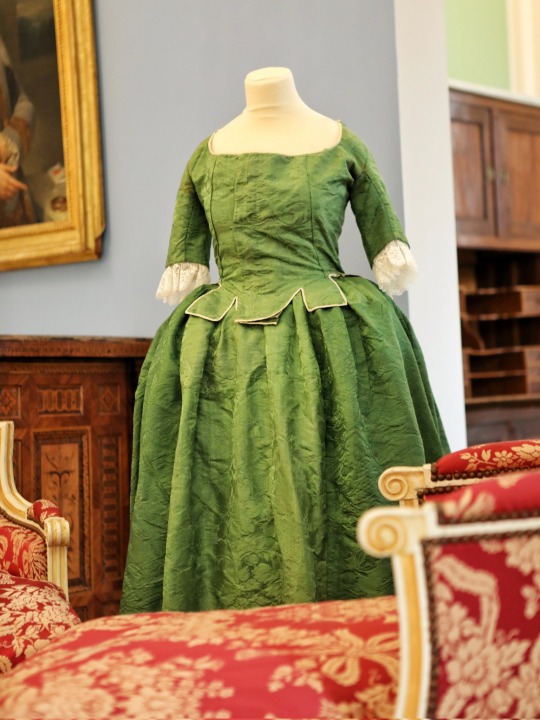
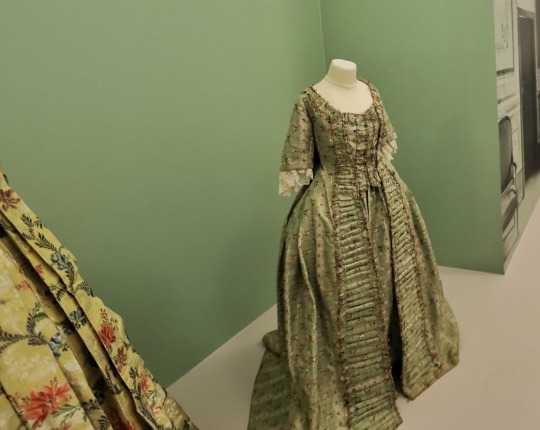
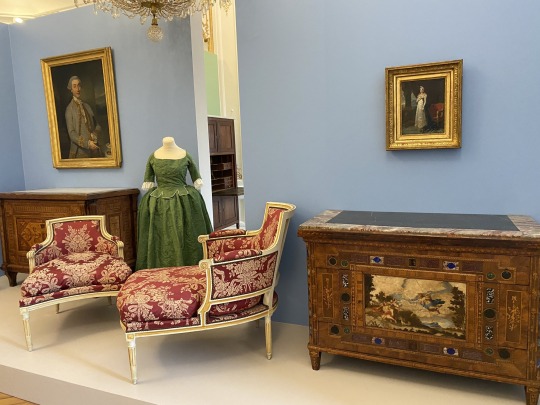
18th century dresses at Malmaison in France. Current exhibition from the Château de Bois-Préau: 1769, Corsica at the Birth of Napoleon Bonaparte
For several years, the National Museum of the House of Bonaparte in Ajaccio, Napoleon's birthplace where his family lived since the end of the 15th century, has been exploring with talent the history of Corsican society, the architecture of patrician houses, their furnishings and the art of living in Corsica in the 18th century.
For the first time, the synthesis of this work will be presented at the National Museum of châteaux des Malmaison and Bois-Préau on the ground floor of the newly restored Château de Bois-Préau.
#dresses#18th century#1700s#1700s fashion#18th century fashion#rococo#Corsica#corse#La corse#malmaison#château de malmaison#Château de Bois-Préau#1700s dresses#18th century dresses#18th century dress#robe a la francaise#robe à la française#sack-back gown#18th century gown#gown#1700s gown#Paris#Ajaccio#Bonaparte#fashion#history of fashion#fashion history#France#Napoleon#napoleon bonaparte
152 notes
·
View notes
Text
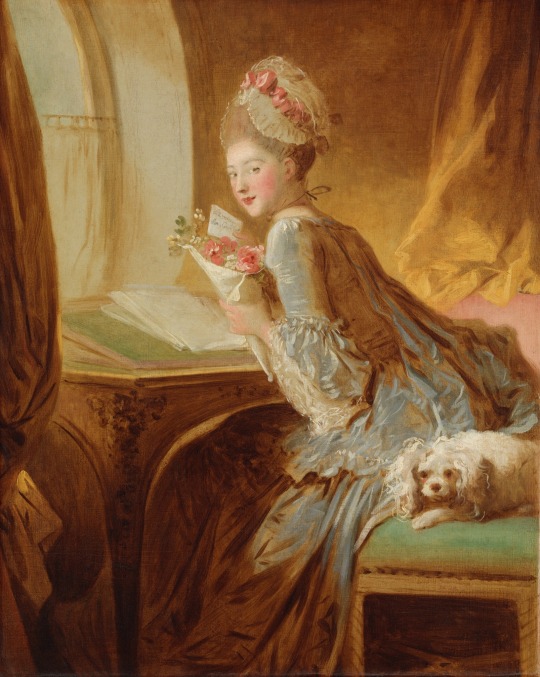
The Love Letter (early 1770s) by Jean Honoré Fragonard (French, 1732-1806), oil on canvas, 83.2 × 67 cm, The Jules Bache Collection, 1949, The Metropolitan Museum of Art, New York City
#the love letter#jean honoré fragonard#18th century#painting#oil on canvas#the metropolitan museum of art#the met#fidelity#robe a#robe a la francaise#robe à la française#art#fine art#rococco
13 notes
·
View notes
Text

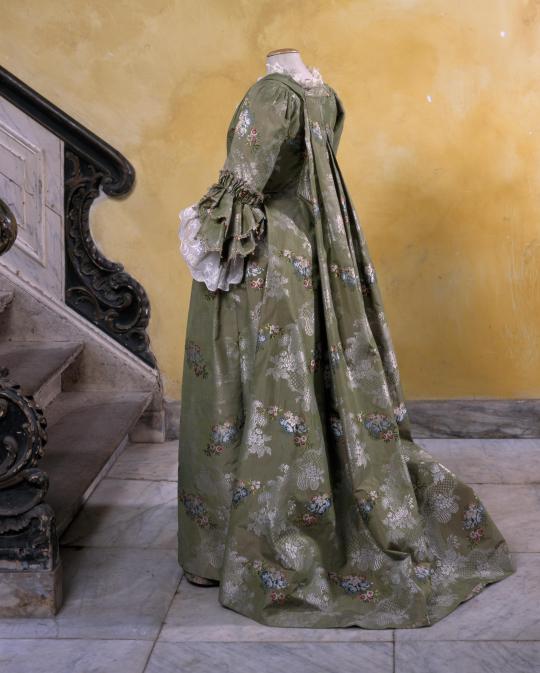
1770-1775 Robe à la française, consisting of an overcoat and skirt
silk
(Centraal Museum, Utrecht)
533 notes
·
View notes
Text

a snap from the fête. // IG
#rococo#marie antoniette 2006#marie antoinette#late baroque#pastel aesthetic#historical clothing#historical costume#princesscore#fairytale aesthetic#white aesthetic#white dress#18th century#18th century costume#18th century fashion#mignonne#2022#robe à la française#robe a la francaise#pastel purple
834 notes
·
View notes
Text
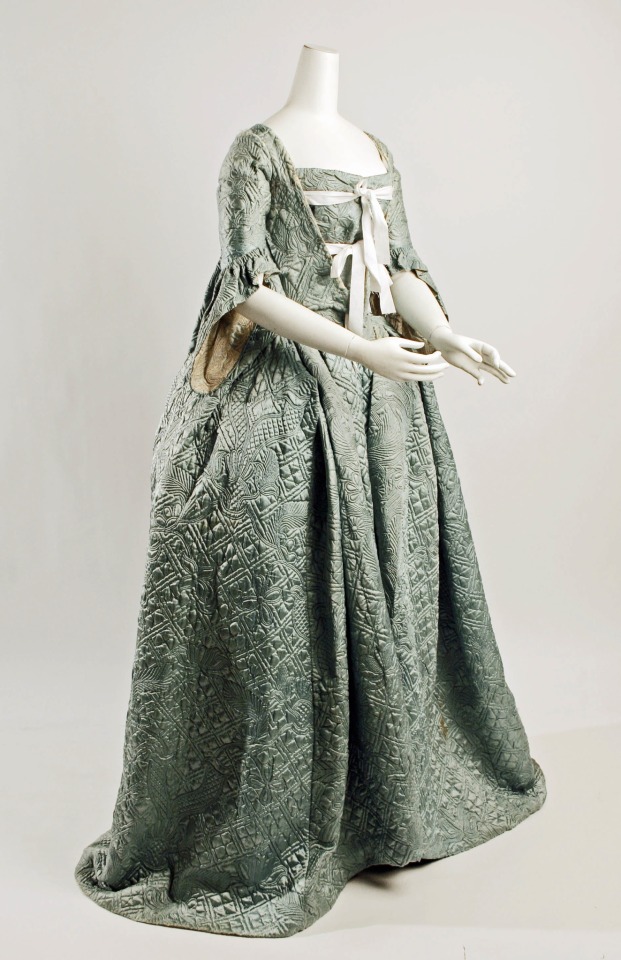

Blue Quilted Silk Robe à la Française, ca. 1750, European.
Met Museum.
#blue#womenswear#extant garments#dress#silk#robe à la française#1750#1750s#1750s dress#1750s extant garment#met museum
147 notes
·
View notes
Text
[…] lorsque vous vous trouvez au seuil de la misère, vous faites une découverte qui éclipse presque toutes les autres. Vous avez découvert l’ennui, les petites complications mesquines, les affres de la faim, mais vous avez en même temps fait cette découverte capitale : savoir que la misère a la vertu de rejeter le futur dans le néant.
George Orwell, Dans la dèche à Paris et à Londres (Down and Out in Paris and London)
VO :
[...] You discover boredom and mean complications and the beginnings of hunger, but you also discover the great redeeming feature of poverty: the fact that it annihilates the future.
#George Orwell#Dans la dèche à Paris et à Londres#livre#book#citation#citation française#littérature#littérature anglaise#autobiographie#Down and Out in Paris and London#quote#english quote
33 notes
·
View notes